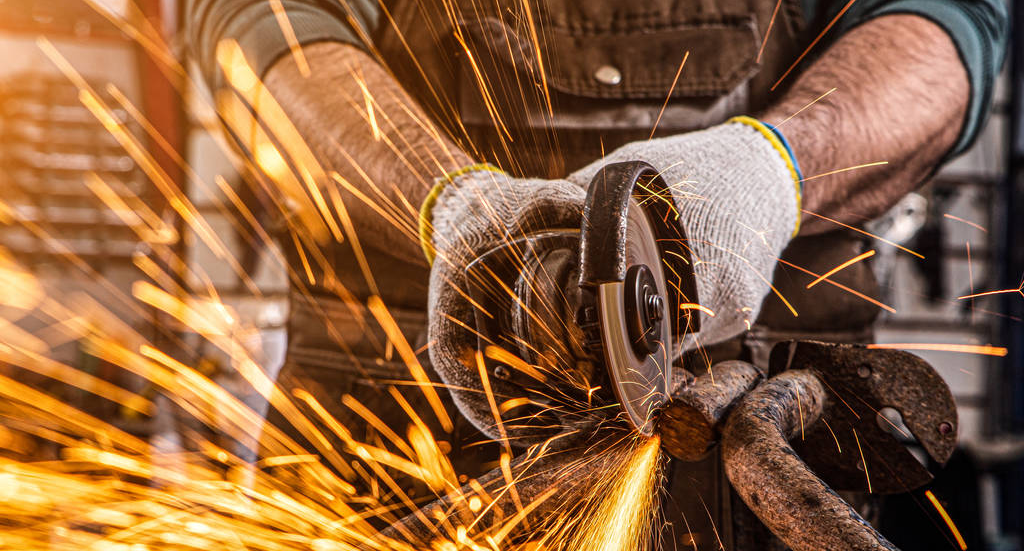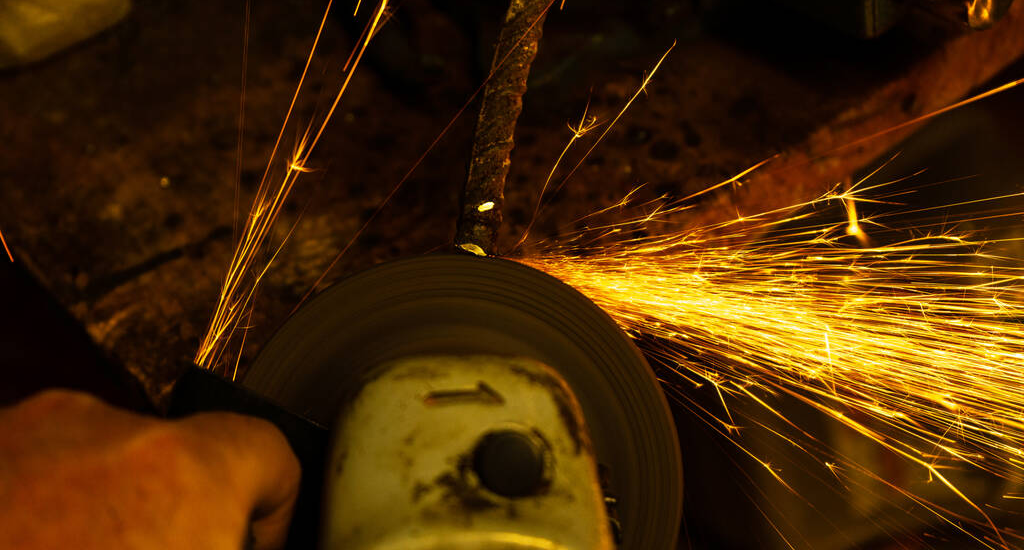Rust is a common problem for metal tools, but it doesn’t have to mean the end of their usefulness. Among various rust removal techniques, using abrasive tools stands out as an effective and straightforward method. This approach involves physically scraping or grinding away the rust, restoring the tool’s functionality and appearance. In this article, we will delve deeply into how to use abrasive tools for rust removal, focusing on tools like grinding discs, sandpaper, and wire brushes.
Understanding Using Abrasive Tools
Using abrasive tools refers to the process of removing rust by applying physical force with abrasive tools. This method is especially effective for tools with thick rust layers or large flat surfaces. The process involves grinding, sanding, or scrubbing the rusted area until the corrosion is eliminated, leaving the clean metal underneath.
Step-by-Step Guide to Removing Rust Using Abrasive Tools
Step 1: Assess the Tool and Rust Severity
Before starting, examine the extent of the rust.
- Light Rust: Fine-grit sandpaper or steel wool might be enough.
- Moderate Rust: A wire brush or medium-grit sandpaper should do the job.
- Severe Rust: Heavily rusted tools may require a grinding disc or flap disc for efficient removal.
Step 2: Gather Necessary Tools and Materials
Depending on the severity of the rust, you will need:
- Grinding Disc or Flap Disc (for power tools)
- Sandpaper (various grits, from coarse to fine)
- Wire Brushes (handheld or drill-mounted)
- Steel Wool (for light rust)
- Protective Gear: Safety goggles, gloves, and a dust mask
Step 3: Use a Grinding Disc for Heavy Rust
Grinding discs are among the most efficient tools for removing heavy rust from metal surfaces. When attached to an angle grinder, these discs can quickly strip away layers of rust, even from severely corroded tools.
- Choose the Right Disc: Select a disc suitable for rust removal. Discs with coarse abrasives (e.g., 36-60 grit) are ideal for aggressive rust removal.
- Secure the Tool: Clamp the rusted tool in a vice or secure it on a stable surface to prevent movement during grinding.
- Operate the Grinder Safely:
- Wear safety goggles, gloves, and a dust mask to protect yourself from sparks and debris.
- Hold the grinder firmly and start at low speed to gain control.
- Apply the Grinding Disc:
- Position the disc at a 15°–30° angle to the surface.
- Move the grinder in steady, even strokes to avoid uneven grinding.
- Avoid excessive pressure to prevent damaging the tool’s surface.
- Inspect and Refine: Once the rust is removed, switch to a finer abrasive or polishing disc to smooth the surface.
Step 4: Sandpaper for Moderate Rust
Sandpaper is versatile and effective for tools with moderate rust. Start with a coarse grit (e.g., 80-grit) and work your way to finer grits for a polished finish.
How to Use Sandpaper:
- Select the Right Grit Sandpaper: Begin with coarse sandpaper to remove the bulk of the rust. Use finer grits (e.g., 220-grit) for smoothing.
- Sand the Rusted Area: Rub the sandpaper firmly over the rusted area in a circular motion. For intricate tools, cut the sandpaper into smaller pieces to reach tight spots.
- Repeat as Necessary: Continue sanding until the rust is completely removed, and finish with fine-grit sandpaper for a smooth surface.
Step 5: Wire Brushes for Hard-to-Reach Areas
Wire brushes, either handheld or drill-mounted, are excellent for removing rust from tools with complex shapes, grooves, or crevices.
How to Use a Wire Brush:
- Choose the Brush Type:
- Handheld brushes are great for light rust and precision work.
- Drill-mounted brushes speed up the process and are suitable for larger or more intricate tools.
- Brush the Rusted Surface:
- Apply steady pressure and move the brush in back-and-forth or circular motions.
- For power tools, use moderate speed to avoid overheating the tool or damaging the surface.
- Clean the Tool: After brushing, wipe the tool with a clean cloth to remove debris and inspect for remaining rust.
Step 6: Steel Wool for Light Rust
Steel wool is a gentler abrasive and works well for lightly rusted tools or for final polishing after using coarser methods.
How to Use Steel Wool:
- Rub the rusted area with steel wool using moderate pressure.
- Focus on small sections at a time for better control.
- After rust removal, use fine steel wool to smooth the surface.
Polishing and Protecting the Tool After Abrasive Tools
Once the rust is removed, polishing the tool ensures it’s ready for use and prevents future rust.
- Clean the Tool: Wipe it with a damp cloth to remove dust and debris, then dry thoroughly.
- Polish the Surface: Use a metal polish or buffing compound with a soft cloth to restore the tool’s shine.
- Apply a Protective Coating:
- Use oil (e.g., machine oil or WD-40) to create a barrier against moisture.
- For long-term protection, consider a rust inhibitor spray or wax coating.
Advantages of Using Grinding Discs for Rust Removal
Grinding discs offer several benefits over other abrasive tools:
- Efficiency: Quickly removes thick rust layers, saving time and effort.
- Versatility: Suitable for both flat surfaces and complex shapes.
- Durability: Long-lasting and capable of handling tough jobs.
Safety Tips When Using Abrasive Tools
- Always wear protective gear, including safety goggles, gloves, and a dust mask.
- Work in a well-ventilated area to avoid inhaling rust particles.
- Secure the tool firmly to prevent accidents.
- Follow the manufacturer’s guidelines for power tools and abrasive discs.
Preventing Rust After Using Abrasive Tools
After removing rust, take steps to ensure it doesn’t return:
- Store Tools Properly: Keep them in a dry, low-humidity environment.
- Apply Protective Coatings: Regularly oil or wax tools to repel moisture.
- Routine Maintenance: Inspect tools frequently for early signs of rust and address them promptly.
Conclusion
Rust may seem like an inevitable problem for metal tools, but with using abrasive tools, it’s easy to restore your tools to their former glory. Whether you’re using grinding discs for heavy-duty rust removal or sandpaper for a more refined approach, this method is effective and accessible. By polishing and protecting your tools after the process, you can ensure they remain rust-free and functional for years to come.
Using abrasive tools not only extends the life of your tools but also enhances their performance, making it a worthwhile investment of your time and effort. So, roll up your sleeves, gear up, and let your tools shine once again!


